Hi Guys,
I had the good fortune recently to acquire one of these interesting accessories. I had only ever seen the sketch pictured in Storz and a manual owned by a friend; never a physical example.
There is also a bit of confusion around the concept; the M. Wagner-produced "training sights" are often mistaken for anti-aircraft sights (or "upsold" by dealers), as outlined here:

 www.k98kforum.com
www.k98kforum.com
The true incarnation of the anti-aircraft sight is significantly rarer and they are not well-observed. The history is pretty sparse, but this was written in Storz about them:
[In the first weeks of the war, combating enemy aircraft had proved to be an important and difficult battlefield assignment. A certain Dr. Oechelhäuser developed a special foresight for anti-aircraft fire, which was tested by the Rifle Inspection Commission. In March 1915 an order was placed for 110,000 items, 10,000 were to go to the eastern front and 100,000 to the west. But the product was a great disappointment:
According to troop reports on experiences with the anti-aircraft foresight for the M 98 rifle for combating aircraft, the War Ministry considers it proven that no special value can be attached to the foresight. It has no noticeable advantages over the normal sight. Direct successes have not been observed. For this reason no further anti-aircraft foresights will be acquired.] (Storz, 2006, pp. 290–291)
The following sketch was included with the passage quoted above in Storz.

According to the manual, the sight could be turned to the left or right, depending on the direction the plane was traveling. The idea was to provide something to directly aim at, rather than "leading" the target. There are also some supplementary instructions within the manual and some distance tables. As the history shows, it didn't really help much and these failed quickly; likely explaining the lack of observed examples.
This particular example is a dug relic I acquired from a French collector, but fortunately remains relatively intact. The graduations are long gone, but the brass slider and some of the sight posts remain. The ring and bracket to mount around the barrel is also intact, despite being steel. While it would be nice to encounter one in better shape, this is a nice window into a poorly understood accessory and a solid collectible in its own right. I thought I'd share it here and continue building our database of accoutrements for imperial rifles.
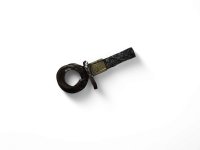
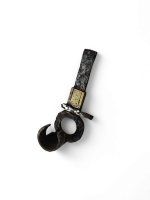

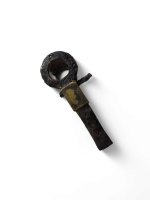
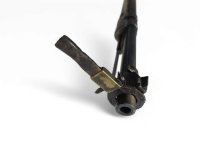
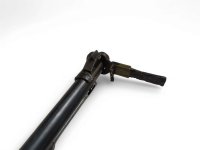
Sources cited: Storz, D. (2006). Gewehr & Karabiner 98: die Schußwaffen 98 des deutschen Reichsheeres von 1898 bis 1918.
I had the good fortune recently to acquire one of these interesting accessories. I had only ever seen the sketch pictured in Storz and a manual owned by a friend; never a physical example.
There is also a bit of confusion around the concept; the M. Wagner-produced "training sights" are often mistaken for anti-aircraft sights (or "upsold" by dealers), as outlined here:
M. Wagner Training Sights for the Gew 88/98
I wanted to do a post on this accessory I acquired from Mike a while back. For many years, these accessories were sold as "anti-aircraft sights" (Paul Scarlotta's problematic book also refers to them as AA), though the true use is a bit more mundane. Manufactured by M. Wagner in Trier, the...
The true incarnation of the anti-aircraft sight is significantly rarer and they are not well-observed. The history is pretty sparse, but this was written in Storz about them:
[In the first weeks of the war, combating enemy aircraft had proved to be an important and difficult battlefield assignment. A certain Dr. Oechelhäuser developed a special foresight for anti-aircraft fire, which was tested by the Rifle Inspection Commission. In March 1915 an order was placed for 110,000 items, 10,000 were to go to the eastern front and 100,000 to the west. But the product was a great disappointment:
According to troop reports on experiences with the anti-aircraft foresight for the M 98 rifle for combating aircraft, the War Ministry considers it proven that no special value can be attached to the foresight. It has no noticeable advantages over the normal sight. Direct successes have not been observed. For this reason no further anti-aircraft foresights will be acquired.] (Storz, 2006, pp. 290–291)
The following sketch was included with the passage quoted above in Storz.

According to the manual, the sight could be turned to the left or right, depending on the direction the plane was traveling. The idea was to provide something to directly aim at, rather than "leading" the target. There are also some supplementary instructions within the manual and some distance tables. As the history shows, it didn't really help much and these failed quickly; likely explaining the lack of observed examples.
This particular example is a dug relic I acquired from a French collector, but fortunately remains relatively intact. The graduations are long gone, but the brass slider and some of the sight posts remain. The ring and bracket to mount around the barrel is also intact, despite being steel. While it would be nice to encounter one in better shape, this is a nice window into a poorly understood accessory and a solid collectible in its own right. I thought I'd share it here and continue building our database of accoutrements for imperial rifles.






Sources cited: Storz, D. (2006). Gewehr & Karabiner 98: die Schußwaffen 98 des deutschen Reichsheeres von 1898 bis 1918.


